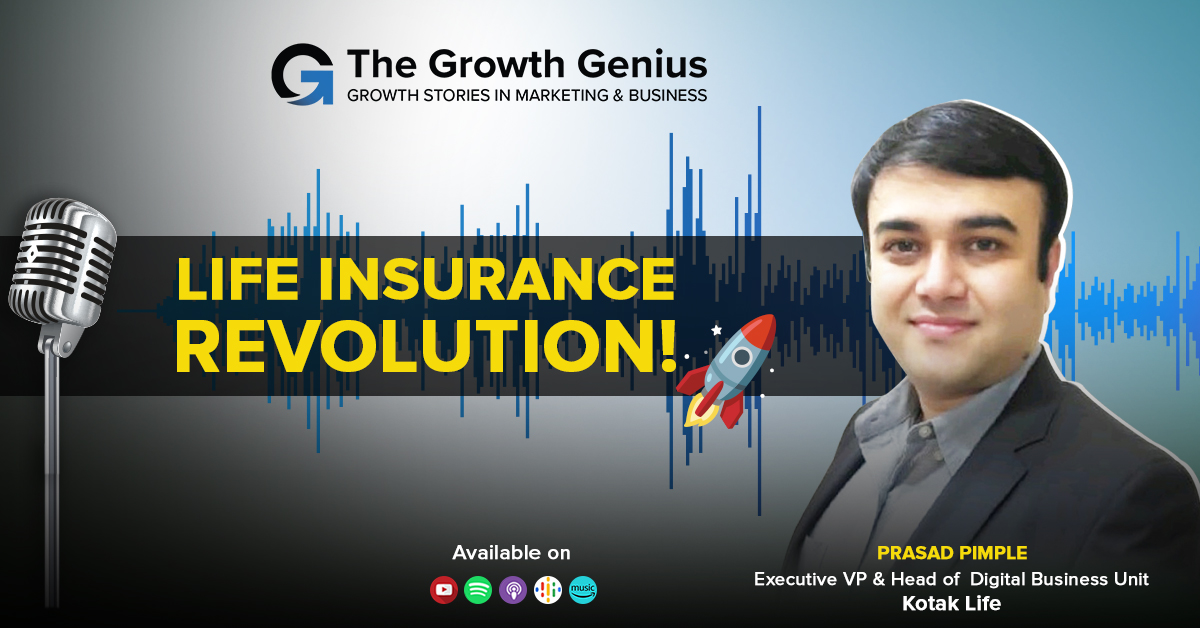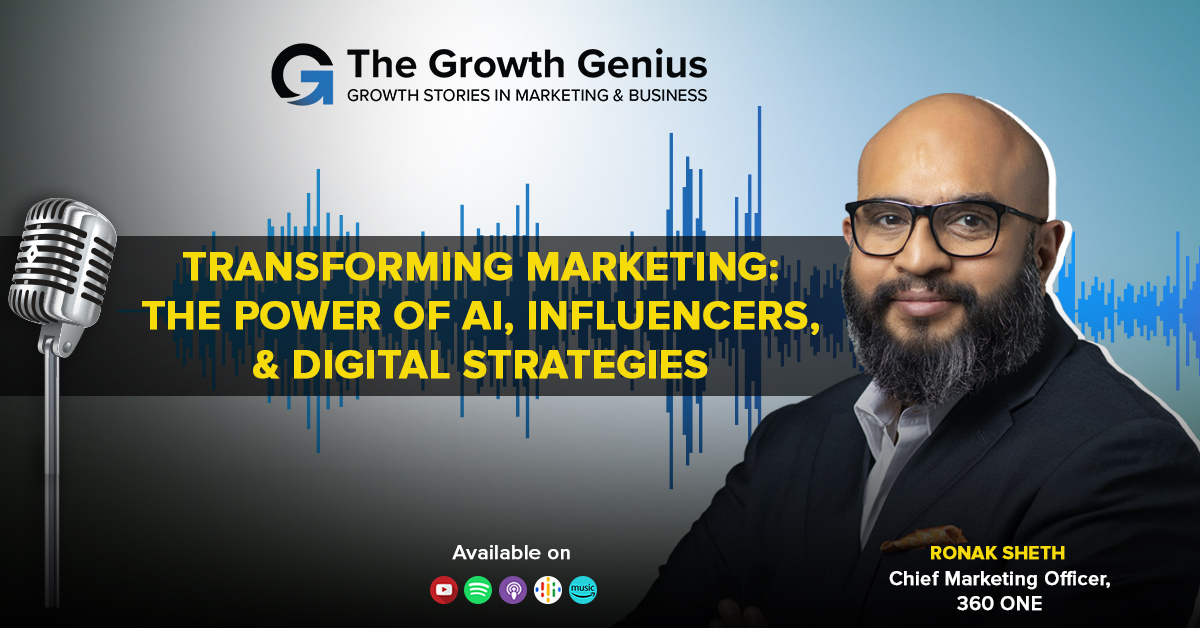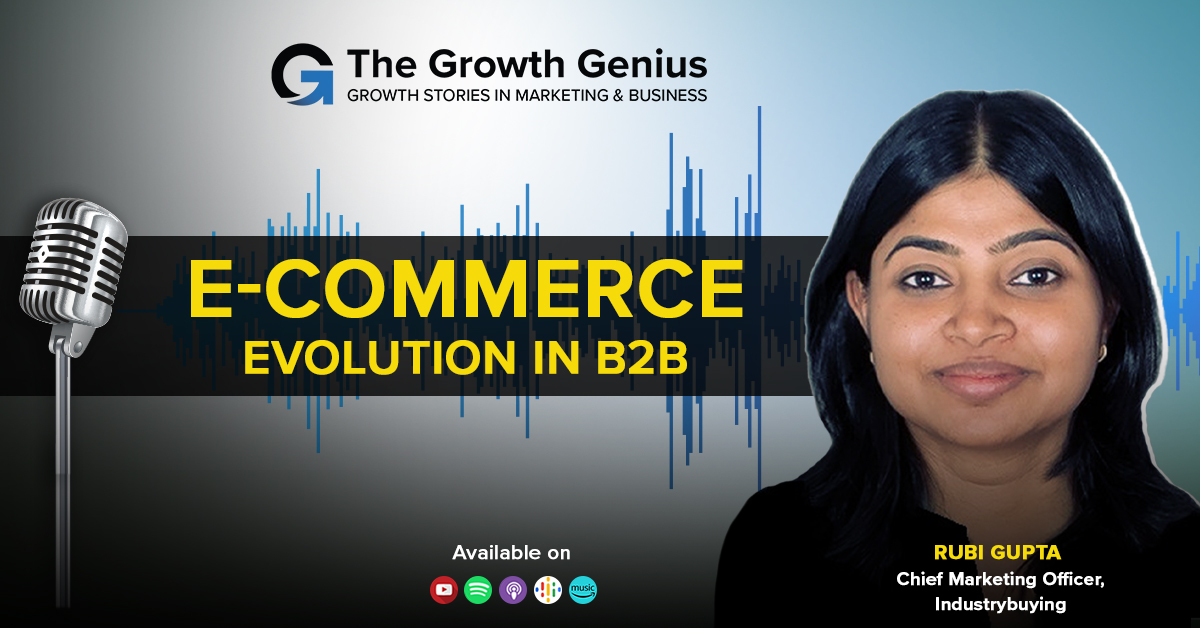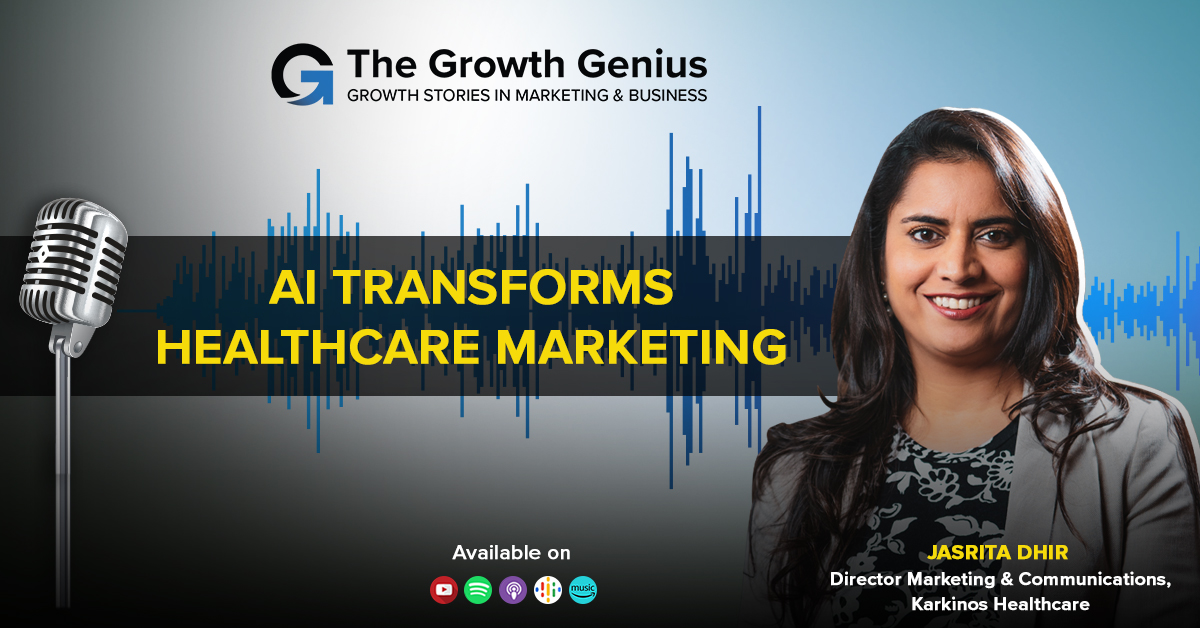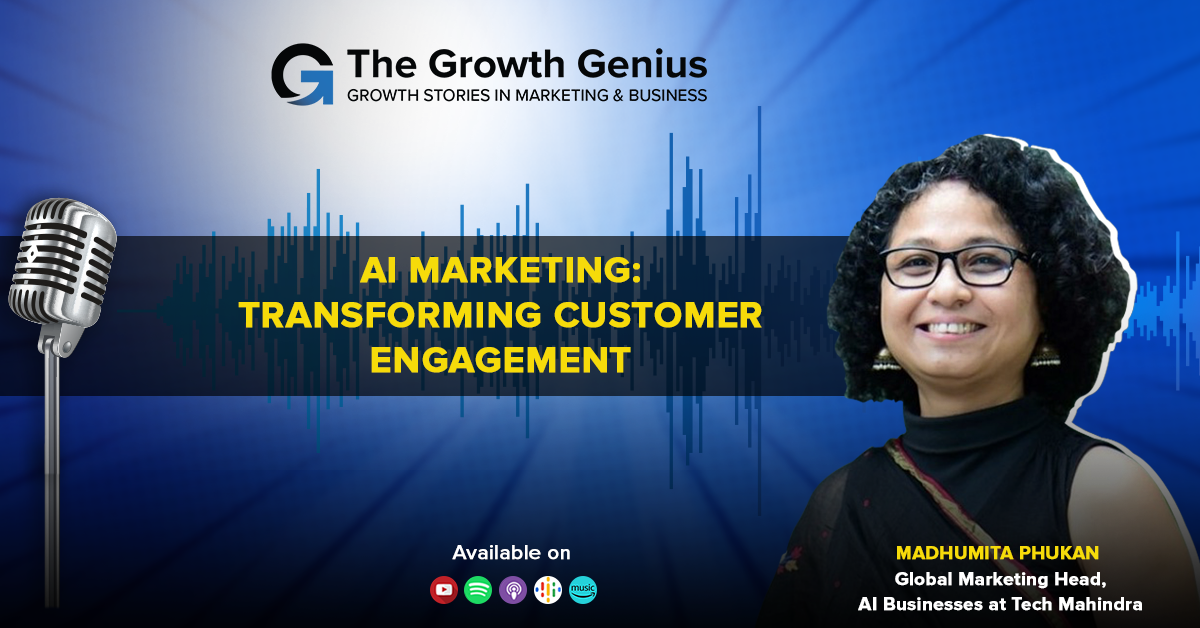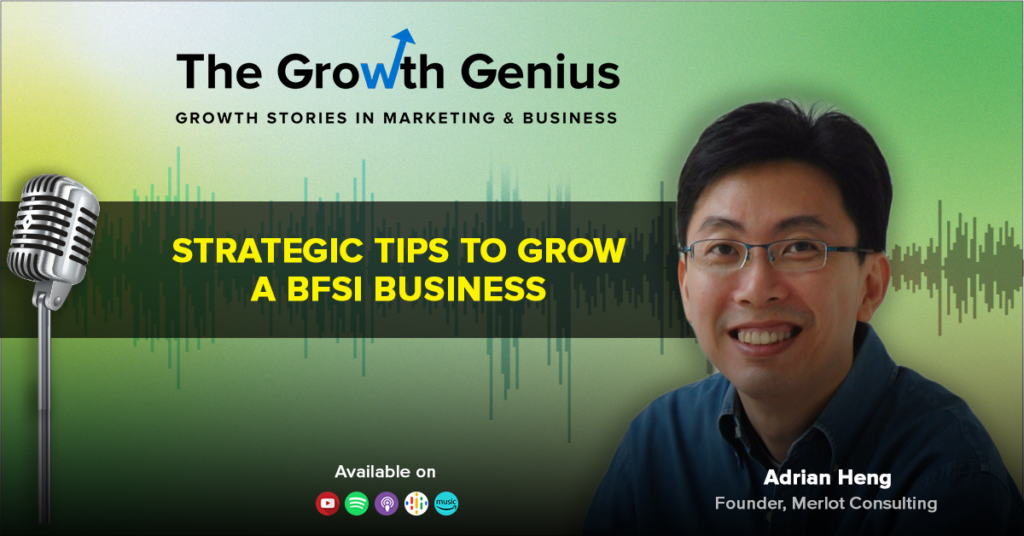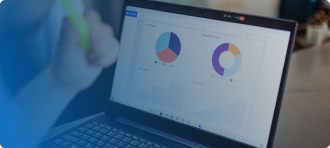
Witness an Increase in your ROI
Unlock higher rankings, quality traffic, and amplified conversions through tailored award-winning SEO strategies.
|
Getting your Trinity Audio player ready...
|
Listen on your Podcast app
Summary
In this podcast episode, Adrian Heng discusses marketing strategies post-COVID. He emphasizes the importance of adapting to the new normal and understanding the changing consumer behavior. Heng suggests that businesses should focus on building trust and empathy with their customers, as well as leveraging digital platforms to reach a wider audience. He also highlights the significance of data-driven decision making and the need for marketers to stay updated with the latest trends and technologies. Heng believes that the pandemic has accelerated the shift towards digital marketing and urges marketers to embrace this change. Overall, this podcast provides valuable insights and practical tips for marketers navigating the post-COVID marketing landscape.
Key Take Aways
The blog “Marketing Post-COVID” by Adrian Heng highlights several key takeaways for digital marketers.
- Adaptability: Marketers need to be flexible and adapt their strategies to the changing consumer behavior and market trends.
- Customer-centric approach: Focusing on customer needs and preferences is crucial for success in the post-COVID era.
- Data-driven decision-making: Utilizing data analytics and insights can help marketers make informed decisions and optimize their campaigns.
- Embrace digital transformation: The pandemic has accelerated the shift towards digital platforms, and marketers must embrace this transformation to stay relevant.
- Personalization: Tailoring marketing messages and experiences to individual customers can enhance engagement and drive conversions.
- Content marketing: Creating valuable and relevant content is essential for building brand trust and loyalty.
- Social media marketing: Leveraging social media platforms effectively can help marketers reach a wider audience and engage with customers.
- Collaboration: Collaborating with other businesses and influencers can expand reach and create mutually beneficial partnerships.
Read Transcript
Adrian Heng:- Everybody thinks of technology and they go, it’s so boring, it’s so technical, so difficult, but I would like to think that we made it easier, we made it a little bit more fun. Your various social media platforms are still very important, but we need to start looking at how we engage our audiences offline and then incorporate the digital aspect into it. I mean, you know, when Facebook first started it was very much a young person’s product and a young products platform, but today increasingly it’s the older people who are using it and younger people have moved off into different platforms.
Shelly Singh:- Hello and welcome to The Growth Genius Series brought to you by DMAAsia and Infidigit, my name is Shelly and I’m the country director – Americas at Infidigit. I’m also the founder and director at DMAAsia. In this Growth Genius series the world’s best marketers and business leaders are interviewed about the brands they have worked on, their successful campaign strategies, how they got noticed by their customers and how they delivered better customer experiences to drive growth. In each episode we want to share the big idea that inspires these marketers, the campaign trail they used to execute it and how it all came together.
Today our guest is Adrian Heng, an international communications and marketing professional with over 20 years of experience. Adrian is the founder of Merlot Consulting. As a Senior Counsel for the consultancy, he now works with start-ups, SMEs, MNCs, NPOs and government agencies advising on their growth strategies as well as helping build their brand recognition, effectively engaging their target audience to achieve their strategic objectives. Having worked with some of the world’s leading consultancies and multiple companies leading global teams, Adrian has won several international awards along the way, he also mentors several young and aspiring professionals. Welcome, Adrian.
Adrian: – Thank you, Shelly, great to be here.
Shelly: – Great. So you have 20 years of experience in marketing and communication, please tell us how your professional Journey unfolded?
Adrian: – Okay. So I started as a fresh graduate not really knowing what I wanted to do. I was fortunate enough to be hired by Ogilvy, what used to be called Ogilvy and Mather Public Relations then, as a fresh consultant working in the technology practice which was at that point in time booming and I think at that point of time also people trying to figure out, okay, what do we do in terms of communicating technology because everybody thinks of technology and they go, oh it’s so boring, it’s so technical, it’s so difficult, but I would like to think that we made it easier, we made it a little bit more fun. And since then I’ve been fortunate enough to go for consultancy into the client space very often, an actual client from the consultancy, so when I leave consultancy one of my clients would look me up and go, hey, Adrian, will you come work for us.
It’s been a great ride, wouldn’t change it for the world. It’s opened a lot of doors from becoming an adjunct associate professor for National University of Singapore to sharing various advisory boards for different organizations including in NUS. And now with another start-up association in Singapore, it’s taken me around the world and back, working in the U.S, working on global campaigns and just trying to have fun along the way, meeting lots of great people and great mentors and without them, I think, I wouldn’t be here today.
Shelly: – That’s great, Adrian. So do you think that the pandemic has changed the marketing industry? What are some of the significant growth drivers for the brands?
Adrian: – When the pandemic started about three years ago the world saw extensive lockdowns and restrictions to people. Organizations quickly shifted to a digital centric approach to continue to try to engage their audiences because everybody was home and, you know, everybody was either on their laptops, computers or mobile phones or other digital devices. This has been great in many, many ways. Marketing teams have been able to develop their digital skills like in analytics, search, social media and lots of other areas which have been a long time coming especially in areas of analytics. But I think with the lifting of restrictions people are increasingly getting out of their homes and offices to live their lives again, so this is pushing marketing teams to add that to the channels makes beyond just digital, out of home advertising, events, public relations, fun activities like conferences, games, a lot of different things. So this is something that’s blown out of need and I think this is going to be increasingly more and more important, but marketing teams are still trying to catch up to it because I think there was a huge investment into digital space because all of us didn’t know how long this pandemic was going to last. I mean some of the worst predictions were that it was going to last five years or more, so the need to shift back into non-digital activities has taken a little longer than I think is necessary. Companies need to move a lot quicker. Google search is great, your various social media platforms are still very important, but we need to start looking at how we engage our audiences offline and then incorporate the digital aspect into it.
Shelly: – Yeah, these are great points. So can this be an opportunity for the organizations?
Adrian: – Oh definitely, I think it’s a great opportunity for us marketing people and organizations as a whole too, we look at our audiences and what they want from us. Three years is a very,very long time in terms of marketing and business today. People change, expectations change, needs change, so it’s opportunity for us to look at a fresh how we want to engage our audiences, what do audiences want from us in terms of what do they – what sort of products do they want, what sort of services they want, how do they want us to engage with them.
Like I was saying earlier, I think increasingly they don’t want just digital, they want to see us out and about right next to them when they’re on the streets, when they are at the events, when they’re having dinner, how do we start to change that marketing mix where we effectively find them and engage them where they are.
Shelly: – Yes, I think you’re very right that customers were really wanting to, they were hoping for the human connection again. They wanted to go out and shop.
Adrian: – Exactly.
Shelly: – They wanted to touch and feel and try things. So that was missing but now they really want that. So what do marketers need to consider when embarking on this new / old normal?
Adrian: – I think they need to understand again what the audience wants and from organization to organization differs. For a lot of consumer brands I think people, as you mentioned, as they’re out about they want to touch and feel, they want to engage with people. So the brick and mortar stores, I think, will see increasingly more and more people coming back. I think one new concept might be people might not actually buy at the brick and mortar store, but they will go in, they will try, they’ll touch, they’ll feel, they’ll test, I think increasingly we’ll see more concept stores where you might not need stores everywhere and every street corner, but where people can – strategic locations where people can go in the feel of the cloth, try the new vacuum cleaner or maybe even taste certain things, if restrictions allow us to do the tasting and touching. Then they get to feel, okay, this is what it is in real life and then go back, think about it, okay, I really like it and then go to the online store and buy it, how do we bridge that gap, how do we make it possible for these people. At the same time I think with the digital being great in terms of collecting information, in terms of bringing information to people to exactly where they are, we need to look at how, you know, if somebody goes into the store and tries to sit in something or if they’re out and about at an event, how do we bring the digital outreach into that experience as well. So, maybe at the store it could be, you know, if you like this particular thing you can scan a QR code and save it into your shopping cart so you can think about it and buy it later or it could be, you know, your added events where it’s a lot of fun, it’s a lot interesting how do you take that event, expand experience a little bit more. How do we have the event continue post event, so after the event they could be receiving digital messages or they could be, hey, you were at this event, thank you for coming, here are a couple of things you could do on your phone to learn more, or if you like this particular speaker , you know, here’s a white paper of that speaker that you might find interesting. And if you want to take it further, we have experts that can take you a little bit or give you a little bit more information, invite you for a meeting or organize something for you to continue that experience. And this is something I think not enough organizations are doing.
And I’ll add one last thing: with this new normal especially, after the pandemic people want to go out and laugh again, smile, enjoy themselves a little bit. I think increasingly organizations and it’s not just the consumer or the fun brands but the more traditional brands or more b2b brands, we need to look at we give that audience, our audience a little bit of fun, a little bit of laughter. I think any brand that makes your audience smile, in a good way of course, not in a bad way, but smile or laugh and go, hey, this is enjoyable, it is one step into winning your audience over and keeping your audience involved, engaged and keeping a brand top of mind.
Shelly: – That’s very right. I think that the human element should always be there while communicating with your customers. So can you share any campaign which really inspired you and you were really impressed by it which was done in Singapore or any other market?
Adrian: – Okay, so this was the campaign, sounds a little egoistic, but this was a campaign I actually did many years ago, or not many, a few years ago for a microchip company. So this microchip company was number two, the big brand and I won’t say who it was because you don’t talk about competitors, right so for a long time they were struggling to get the message out. Their microprocessors were good, as good as the leader in the market, at that particular point they were in fact better than the leader in certain areas, but because they’ve been seen as second choice and it was a challenge for them to get that message out. So one of the – they were starting to run ads in the press in the U.S about, you know, we are now as good as the leader and press imagery they gave was of a boxing ring, you know, we can match the leader in x y and z now. So when my client showed me those ads, I was like, oh, this is really interesting and asked, “How about if we take this one step further?” and my client goes, “What do you mean?” So like, you know, it’s saying that your product is as good as the leader if not better, why don’t we do comparison tests in public, you know. Usually these are all done in the back room somewhere, so I said let’s do it in public. And the initial reaction was, “Hey, Adrian, this has never been done, you know, people don’t compare things in public.” I said no, people do, you know, people do blindfold tests for soft drinks of food, so why don’t we take that consumer brand idea and do it in a technology space which has traditionally never been done. So after some discussions, okay, a lot of discussions, we finally got to execute it. So we did at the event, we invited media, we invited chief editor for technology publication to be the impartial judge, we brought in various business partners that used the microchip so that we can compare based on their systems the two different processes how would be the performance. To get the word out further, we leveraged digital media, so we put the word out there that, hey, we’re doing this comparison study, if you happen to be in the area and you’re interested, please drop by and check it out. We were very naughty in that we went and bought table space at the food court nearest to the competitor and stuck stickers on the table saying that, hey, we’re doing this challenge at this time at this place, we challenge this other brand to come down. So word got out, the forums people started talking about it which was great and on that day itself when we were having that event, we started get – we had a lot of press show up, some of them were from overseas, we hadn’t even invited, they found out about it, they said, you know, we want to come so we’re like, sure, please do. But at the event itself we had a room at Ritz Carlton, we had a lot of strangers come in, so we were expecting, you know, a few people maybe three, four, five people to show up, geeks and all that who might be interested, but we ended up having a lot of people. This was great, until then we saw a guy in army uniform standing in the back and we’re like, okay, what’s the army doing here. And so after a bit of discussion, I was nominated to go up to the guy and go, “Hi, could I help you?” and he goes, “Oh, no, you know, I saw the chatter on digital media, so I took a bit of time off of army duties to come and check out the event.”
Shelly: – Wow.
Adrian: – Very effectively got the word out and because it was done in such a fun manner but still got the point across very strongly, especially when the competitor chose not to show up to the challenge.
Shelly: – Oh okay.
Adrian: – Yes, because although we invited them, they didn’t have to come, right, so they chose not to come. But by doing so, , you know, it amplified the message that, hey, this brand now the product is as good as the competitor if not better, because if the product wasn’t as good as competitor, competitor would show up and show that, hey, my product is better than everybody else. But because they didn’t show everybody started talking about, wow, you know, looks like this brand this new microprocessors are as good as anything else in the market and the Press picked it up, picked up on it, the Press talk to people in the room, you know, are you excited about this product et cetera. And after that, you know, people were talking about it in digital media, et cetera, and so I guess be again bring that smile and that laughter into the activity. We published 10 reasons why the competitor didn’t show up and it was all done tongue in cheek, so we made jokes about it, et cetera, but it got the point across. And people remembered.
So there’s some people I still meet, some geeks I still meet and some technology publishers I still meet and they still talk about it, oh, , you know, that event you did, that was very naughty of you but we had a lot of fun. So the message got through, we engaged the audience successfully and because it was holistic, we did out of home advertising, tables, we did digital media, we did a particular event, we did follow-ups after that, so I think this is where the new – old normal has to go. We have to make it fun for people again, we have to make it interesting for people again and it has to be done out of homes. Obviously they didn’t buy any product then because we weren’t selling a product at the event, but people went, oh, you know, this is great and we saw the increase in sales interest from the client, so this is what we need to do.
Shelly: – What would have happened if your competitors would have arrived?
Adrian: – We were quite confident that our products would have been just as good if not better, because obviously we did our own testing before that event happened and we did get some third parties to qualify our results. So we’re fairly confident that we would have been at least as good as, and, you know, very important, something the lawyers always say, don’t ask a question unless you already know the answer, same thing, we already knew the answer that our products would be just as good.
Shelly: – Yeah, great. So that’s a great example. Do you think that there are any pitfalls that the marketers need to be careful of now? The consumer behaviour has changed a lot after pandemic and it’s still very unpredictable whether they’d like to go to digital or whether they want to do the physical stores, you know, people are still trying to figure it out that how should they plan their marketing campaigns?
Adrian: – There are a lot of and there are several things that marketers need to look out for. Actually I would say I’ll go even further to say there are several things organizations should look out for. One, I think with the pandemic where we were very digital centric, it was very easy to put whatever we wanted to say on social media on digital media, but now that we are trying to expand beyond social media et cetera, we need to be very careful that what we put up in real life matches with what we do on digital. So the two things have to match. I take it one step further, whatever we do, whatever we say, the campaigns that we run on digital media have to be in sync with what we do in traditional outreach as well. You can’t do two distinctively different campaign, they have to be holistic, they have to merge, they have to support each other, I think this is something that a lot of marketers have kind of started to forget where there’s a digital team and they want to go do their own thing and then the new traditional people want to do their own thing. You need somebody to ensure that everything gels together and this is something that I think organizations should be careful of. Increasingly I see a lot of organizations, especially start-ups I think due to cost constraints, they tend to hire younger and younger people as the head of marketing and the CMOs A year plus ago I met a CMO that was 28 years old and I’m sure she’s very capable, I’m sure she was very smart, but with marketing you do need a certain amount of experience, a certain amount of exposure. I understand organizations especially start-ups are trying to save costs but in the long run this would actually hurt them because without the sufficient experience, without sufficient exposure, you might not be getting as much time for your buck in that sense you might be threat in certain areas that somebody with more experience would go, oh no, we cannot do that because, you know, people will be unhappy.
Young professionals are great, you know, a lot of them are smart, way smarter than what I was many years ago, but they want to do a lot of things, they are very aggressive and good for them in many ways. But sometimes, you know, you need to know where that line is, where audiences will accept and where audiences won’t. The other thing is with some young marketing professionals, they are very set into the mindset of, okay, I want to reach out to a particular age group which is an age group that they are very familiar with and depending on the product or brand sometimes that might not be the age group that you want to go after.
Shelly: – Yeah.
Adrian: – That said older people sometimes also fall into that trap. So my suggestion is maybe you need to look at a mix of people or at least somebody who’s open-minded enough to look at who the audience is. Again going back to, you know, the opportunity, who the audience is, what audience wants, how do we reach them, you know, pink, yellow and green might not work for everybody, it really needs to fall back into who your audience is. Organizations need to look at it, marketers need to look at it, organization leaders, business leaders also need to be aware of that as well.
Shelly: – That’s right. In fact, you know, you so truly said that we sometimes stereotype, you know, that oh, only this age group will love this product, you know, that people above 60 might not like it, but you never know, right. So there have been so many examples where people who have been marketers who have been bold and they from experimentation were surprised with the outcome, you know.
Adrian: – Yes. This is where analytics help but also as products evolve as well, I mean, you know, when Facebook first started it was very much a young person’s product, young products platform but today increasingly it’s the older people who are using it and younger people have moved off into different platforms.
Shelly: – Exactly, so never know how the platform evolves, right.
Adrian: – Exactly, exactly we never know how the products evolve.
Shelly: – Yeah, that’s very valid. My next question is what advice would you give to the younger marketing professionals, you know, what’s your advice to them?
Adrian: – Sure. I talk to a lot of young professionals, people I mentor or, you know, when I’m hiring people and all of them, okay, I won’t say all of them, a very high portion of them all come in and says, “Adrian, I want to do digital, I think that’s very exciting and that’s where I’m familiar with.” And that’s great, you know, it’s good that you are cognizant of where you could add value to the company, where your experience is, where your knowledge can make things better for the company, but I think at the same time if you are looking to grow in the profession, if you want to be CMO one day, if you want to be head of marketing, vice president of marketing, vice president of communications whatever it may be, even CEO you need to go beyond just digital. You need to know how to get out of your home, you need to know how PR works, how communications works, how events work for you and how it works for the brand. If you are just doing digital eventually you stagnate and who’s to say five years, ten years from now digital might not be what it is today, you know. You know, things have changed, many years ago, many, many, many years ago advertising was real and, you know, and all, but today advertising is something to struggle with a little bit. But how do we merge digital with advertising, how do we merge communications or PR with digital with advertising, this is something that’s critical especially at a higher level where you need to have this holistic view of how to reach my audience. It’s not platform-centric anymore. You do need to understand different platforms, you need to know how they work, how they are effective in terms of outreach, in terms of engaging people, what are the strengths but at the end of the day what you need to know is who your audience is and then how do we best reach these people. That is I think my biggest advice for young people coming into our profession today. Don’t get so fixated on digital that that’s all you want to do, look at getting as much experience and as much exposure in different platforms as you can.
Shelly: – That’s very right what you said, because, you know, on my other episode I was interviewing one b2b marketing leader and so this is what I was asking her that do you think there’s a dearth of a traditional sales person because now young people they just want to text and, you know, message and then they don’t want to talk, they don’t want to go face–to-face and she said, “Yeah, but ultimately what’s important is the relationship, right.” Relationships still count and in b2b marketing especially you have to build relations and you can’t build relations just by staying on the phone.
Adrian: – Yes, as you pointed out the human element is still very important.
Shelly: – Exactly.
Adrian: – And the young people don’t realize it but, you know, even though they’re on their phones and they’re on computers, they still go and drink coffee, they still go and have lunch and dinner with their friends.
Shelly: – Yes.
Adrian: – So human elements still play a huge part in what we do in marketing and that’s something that we need to inculcate in the younger professional and that’s something that the younger professionals need to take on that challenge for.
Shelly: – Great. So this brings us to the last segment of this interview. So tell us about any passion you follow other than your work and you’re teaching the young generation too, how do you unwind and also stay inspired?
Adrian: – Wow. I think one of the things I read a lot. A lot of people, especially young professionals, don’t really read anymore. It’s a lot of YouTube. But I still enjoy reading the book, a good magazine. I think being able to learn about different areas whether it’s in medical, is it technology, is it women’s fashion, I think it is important for any marketer because this opens up your mind, this opens up your experience and, you know, I’ve stolen lots of ideas from luxury brands and taken them over to technology and vice-versa, because that works. And at the same time as a marketer we work very hard, so for me it’s a lot of things I do. I try to do it for fun from photography too, I used to teach taekwondo, martial arts, I still run and exercise. I travel, in fact, you know, tomorrow I hop on the plane and I’m headed back to Germany to go visit the Christmas markets.
I think all of these things add to a marketer’s skill sets like what’s happening in the world, trying different things. I ballroom dance too, by the way. So lots of different things give us new experiences which then add to what we bring to the table for organizations that we work for, work with and this is something that all of us should do. I think being able -I mean in Canada, you know, if I was there, I would love to go out and play, have a snow fight with somebody. It’s building a rich life for yourself which ultimately then adds to being a better marketing professional.
Shelly: – Yes, that’s very right. So where can our viewers find you and connect with you?
Adrian: – They can find me on LinkedIn, I’ve been told if you type AdrianHeng in LinkedIn, they will find me very quickly and very easily. I’m pretty open to adding people, I think not as ego thing but I think making as many people and knowing as many people is benefit for me and, you know, whenever I open a new market, whenever I launch a brand new market it’s nice to know somebody in that market and, you know, today they might help me when I’m launching a brand but tomorrow when they are trying to come into Singapore or somewhere in Southeast Asia or somewhere I’ve worked with, I’m happy to return the favour.
Shelly: – Quite noted. I’m coming to Singapore.
Adrian: – Sounds good, let me know when you are, we’ll go coffee or dinner or lunch.
Shelly: – Hopefully soon, yeah, hopefully soon. So thank you so much, Adrian, for your time on the show and great tips to the young marketing professionals.
Adrian: – Thank you.
Shelly: – To all our viewers, thanks for listening and please subscribe to this channel. If you enjoyed this episode and you would like to help and support this podcast, please share it with your friends, post about it on social media, or leave a rating and review. I’ll see you next time in a new episode with a new speaker. Till then peace.


